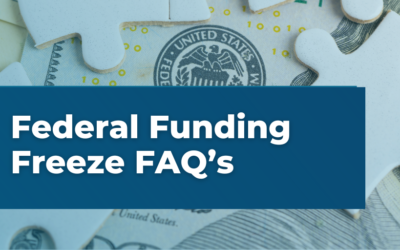Restricted funds play a crucial role in nonprofit financial management. They ensure that donor contributions are used for their intended purposes, helping organizations maintain trust and transparency. However, managing these funds comes with challenges, from compliance requirements to financial reporting.
Managing restricted funds requires careful tracking, strategic budgeting, and full compliance with legal and accounting standards. Failure to follow donor-imposed restrictions can damage an organization’s credibility, result in financial penalties, or even jeopardize its tax-exempt status. At the same time, an overreliance on restricted funding can create cash flow shortages, making it difficult to cover essential operating expenses.
In this guide, we’ll break down what restricted funds are, why they matter, and best practices for managing them effectively.
What Are Restricted Funds?
Restricted funds are donations or grants that come with specific conditions on how they can be spent. These restrictions are set by the donor, a foundation, or a granting agency.
Types of Restricted Funds
There are two main categories of restricted funds:
Temporarily Restricted Funds
These funds must be used for a designated purpose but can be spent once the restriction is met.
Example: A donor gives $50,000 to support a nonprofit’s scholarship program. Once the funds are awarded to students, the restriction is lifted.
Permanently Restricted Funds (Endowments)
These funds must be maintained indefinitely, often with only the interest or investment earnings available for spending.
Example: A donor establishes a $1 million endowment, where only the annual investment returns can be used for nonprofit operations.
Who Sets the Restrictions?
Restricted funds can come from various sources, including:
- Individual Donors: A donor may specify that their contribution must be used for scholarships, building renovations, or a specific program.
- Corporate Sponsors: Companies may provide funds for targeted initiatives, such as community outreach or educational programs.
- Foundations: Grantmakers often require funds to be spent on specific projects, with detailed reporting requirements.
- Government Grants: Public funds typically have strict compliance rules regarding their use.
Why Are Restricted Funds Important?
1. Donor Trust and Accountability
Donors contribute with specific intentions, and nonprofits must honor those wishes to maintain credibility. Misusing restricted funds can damage an organization’s reputation and even result in legal consequences. If you’re undergoing an audit, be sure to add “review restricted fund usage” to your Audit Checklist.
2. Compliance with Legal and Accounting Standards
Nonprofits must follow Generally Accepted Accounting Principles (GAAP) and Financial Accounting Standards Board (FASB) guidelines when managing restricted funds. Proper accounting ensures compliance with IRS regulations and financial transparency.
3. Financial Planning and Stability
Understanding how much of your funding is restricted helps in cash flow management and strategic planning. Relying too much on restricted funds for operational costs can lead to financial strain.
How to Manage Restricted Funds Effectively
1. Clearly Track Restricted vs. Unrestricted Funds
Use separate accounting codes from your chart of accounts to distinguish restricted funds from general operating funds. Many nonprofits use fund accounting software to ensure proper tracking.
2. Communicate with Donors
If circumstances change and you can’t use funds as intended, talk to the donor. Some donors may approve releasing restrictions if the original purpose is no longer feasible.
3. Budget Carefully
Since restricted funds can only be used for specific purposes, ensure you have enough unrestricted funds to cover operating expenses. Overreliance on restricted funds can lead to cash flow shortages.
4. Report Fund Usage Transparently
Regularly update donors, board members, or federal grant providers on how restricted funds are used. Providing clear financial statements and impact reports helps build long-term donor relationships.
How Restricted Funds Impact Nonprofit Operations
Restricted funds influence a nonprofit’s financial health and flexibility. While they provide valuable support for specific initiatives, they also introduce challenges:
- Budget Constraints – Restricted funds can’t be freely used for operational expenses, which may lead to cash flow shortages.
- Donor-Driven Mission Drift – Accepting funds with strict conditions can shift a nonprofit’s focus away from its core mission.
- Long-Term Financial Stability – Managing endowments and restricted funds effectively ensures sustainable growth.
Common Challenges and How to Overcome Them
1. Misuse of Restricted Funds
Challenge: Using restricted funds for unintended purposes can result in legal action and loss of donor trust.
How to Overcome: Implement internal controls, train staff on fund restrictions, and regularly review fund usage to ensure compliance.
2. Managing Cash Flow with Too Many Restrictions
Challenge: If most of your funds are restricted, you may struggle to cover operational costs.
How to Overcome: Diversify your fundraising efforts to secure unrestricted funding for day-to-day expenses, such as through general donations, membership programs, or earned income strategies.
3. Complex Accounting Requirements
Challenge: Tracking restricted funds can be complicated, requiring adherence to strict accounting standards.
How to Overcome: Use nonprofit-specific accounting software or hire a nonprofit CPA to ensure compliance with FASB and IRS guidelines.
4. Difficulty in Tracking Multiple Restricted Funds
Challenge: Managing multiple restricted donations or grants can be overwhelming, leading to accidental misuse of funds, reporting delays, and compliance issues.
How to Overcome: Implement fund accounting software that allows for clear tracking of each restriction. Regularly reconcile accounts and provide training to finance staff on tracking and reporting requirements.
5. Grant Restrictions that Limit Flexibility
Challenge: Some grants come with highly specific spending requirements, making it difficult to allocate funds where they are needed most. This can restrict an organization’s ability to adapt to emerging needs.
How to Overcome: Some grants come with highly specific spending requirements, making it difficult to allocate funds where they are needed most. This can restrict an organization’s ability to adapt to emerging needs.
Advanced Strategies for Managing Restricted Funds
1. Negotiate Flexible Restrictions
Before accepting funds, nonprofits can discuss:
- Allowing administrative expenses within project budgets.
- Modifying restrictions over time.
- Converting restricted funds to board-designated funds.
2. Convert Restricted Funds to Unrestricted Funds
If permitted by the donor or legally feasible, nonprofits can:
- Request donor approval for fund reallocation.
- Use variance power clauses in grant agreements.
- Apply for a court ruling if donor restrictions are no longer practical.
3. Structure Endowments for Greater Flexibility
- Designate part of endowments as quasi-endowments for operational needs.
- Invest wisely to maximize returns for unrestricted use.
Conclusion
Managing restricted funds effectively is essential for maintaining financial health, ensuring compliance, and upholding donor trust. Mismanagement can lead to legal consequences, financial instability, and damage to an organization’s reputation. However, by following best practices—such as tracking funds carefully, communicating transparently with stakeholders, and diversifying funding sources—nonprofits can navigate financial challenges while fulfilling their mission.
A well-managed funding strategy not only strengthens financial sustainability but also enhances donor confidence, making it easier to secure future contributions. Investing in strong financial policies, training staff on fund restrictions, and leveraging technology for fund tracking can make a significant difference in operational efficiency.
Final Tip: If you’re unsure about compliance, consult a nonprofit financial expert to ensure proper fund management.





